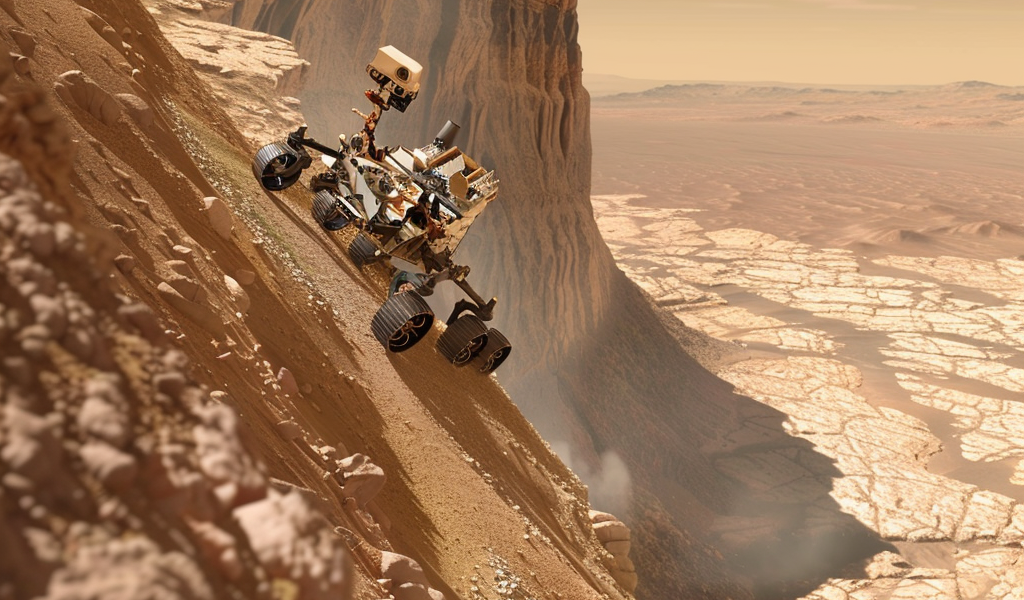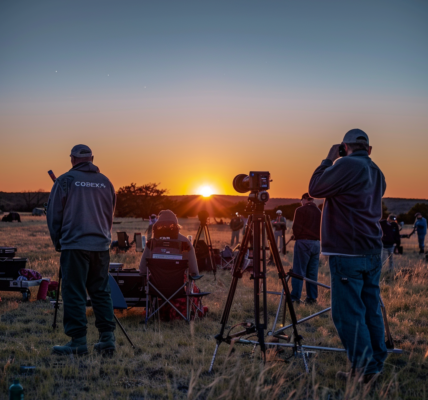NASA’s Perseverance Rover Faces Steep Challenges on Mars
In August, NASA’s Perseverance Mars rover embarked on its fifth and most ambitious science campaign to date. This mission has seen the rover tackle the steep western rim of Jezero Crater, an area that presents some of the most challenging terrain it has ever encountered. As Perseverance continues its quest to collect surface samples and search for signs of ancient microbial life, it is expected to crest the crater rim in early December.
However, the journey has not been without its hurdles. The rover’s team has reported that much of the terrain it is navigating is significantly more slippery than anticipated. This unexpected condition has impeded Perseverance’s progress as it ascends the crater rim. The loose dust and sand, combined with thin and brittle crusts, have resulted in considerable wheel slippage.
On many occasions, the rover has only managed to cover half the distance it would typically traverse on more stable ground. In fact, during one particularly challenging day, Perseverance was able to drive just 20% of its planned route due to the steep and slippery conditions. Previous rovers, such as Curiosity, Opportunity, and Spirit, have encountered steep and slippery surfaces, but none have faced the extreme combination of both that Perseverance is currently experiencing.
“Mars rovers have driven over steeper terrain, and they’ve driven over more slippery terrain, but this is the first time one had to handle both — and on this scale,” said Camden Miller, a rover route planner at NASA’s Jet Propulsion Laboratory (JPL) in California. “For every two steps forward Perseverance takes, we were taking at least one step back. The rover planners saw this was trending toward a long, hard slog, so we got together to think up some options.”
In response to these challenges, the team has been actively working on strategies to enhance the rover’s traction. On October 3, they sent commands to Perseverance to implement several of these strategies. One notable approach involved having the rover drive up a slope in reverse. Testing conducted on Earth indicated that the rover’s suspension system performs better and maintains better traction when navigating backward.
Additionally, the team experimented with cross-slope driving, also known as switchback driving, and directed the rover to the northern edge of the crater. These attempts were made as Perseverance made its way up the route dubbed “Summerland Trail.” Initial results from these strategies have shown promise, as all three methods have improved the rover’s traction while climbing the crater rim.
As Perseverance continues its ascent, the team remains optimistic about overcoming the challenges posed by the Martian landscape. The insights gained from this mission not only contribute to our understanding of Mars but also enhance the knowledge gained from previous rover missions.
In addition to its primary mission objectives, Perseverance is equipped with advanced technology designed to analyze the Martian environment. This includes a suite of scientific instruments capable of conducting detailed analyses of rock and soil samples, which are critical for understanding the planet’s geology and potential for past life.
The rover’s journey up Jezero Crater is particularly significant as the area is believed to have once contained water, making it a prime location for the search for ancient microbial life. The data collected during this campaign will help scientists piece together the history of water on Mars and assess the planet’s habitability.
As the mission progresses, the team at JPL remains committed to adapting their strategies to ensure Perseverance can successfully navigate the rugged terrain. Continuous monitoring and analysis of the rover’s performance will guide future decisions, ensuring that the scientific goals of the mission are met.
With each passing day, the Perseverance rover continues to push the boundaries of exploration on Mars. The challenges it faces serve as a testament to the complexities of planetary exploration, highlighting the need for innovative solutions in the face of adversity. As the rover inches closer to the crater rim, the excitement surrounding its discoveries grows, promising to unveil new insights into the Red Planet’s history and potential for life.





